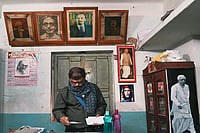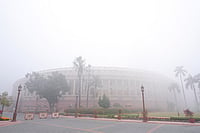
Cotton farmers haven't been as lucky. A credit crunch is central to the cotton crisis, with interest rates of 14-17 per cent being charged when nationalised and cooperative banks give loans to cotton farmers. And as high as 120 per cent if private moneylenders are tapped. With banks unwilling to lend and a government crackdown on private lenders since November, cotton farmers have no credit source but the input dealers (agents of pesticide and seed manufacturers) who supply inputs on credit in return for harvested cotton at cut-throat rates.
While west Maharashtra's grape growers enjoy a captive market in the wineries, Vidarbha's cotton has no assured buyers apart from the monopoly procurement scheme. Which Dandekar calls "a big joke" because farmers are paid eight months after the crop's been carted away. Those in need of instant cash settle for far lower prices from private traders who smuggle the cotton to Andhra Pradesh and Madhya Pradesh. "The mills in Vidarbha have collapsed out of neglect," says Dandekar. "And the big Mumbai-based textile houses want imported cotton."
Input costs have also skyrocketed in the last 15 years. Some, like seeds, by over 200 per cent, others like di-ammonium phosphate by 300 per cent. Cotton prices have done a terrible job of keeping up—the Rs 1,700 per quintal now being offered is what farmers were getting in 1994. Last March, Dandekar conducted a study on the cotton crisis at the behest of the Bombay High Court—it pointed to big, policy-driven failures. According to Dandekar, investment in the rural sector has fallen from 14.5 per cent of the GDP to a third of that amount. So has plan outlay on agriculture. The national employment growth rate in the rural areas has plummeted from 2.4 per cent (1983-1994) to 0.6 per cent (1994-2000). Agricultural subsidies are much lower than the 10 per cent as per the Agreement on Agriculture ratified at Marrakesh in 1994, this at a time when US subsidies run to $54 billion and EU subsidies are more than twice that. "Sixty per cent of our population is locked up in rural areas where there is negligible capital formation and no alternatives," says Dandekar.
In any case, experts contend that even the substantial incentives offered to the wine industry are swallowed up by a handful of big wineries. Pawar—he even has a grape variety, Sharad Seedless, named after him—must explain why the future of a few large wineries is more important than the livelihood of 20 lakh cotton cultivators. Perhaps the state administration will wake up only when it's election time. In Maharashtra, which went to the polls last year, that's four long years away.






















